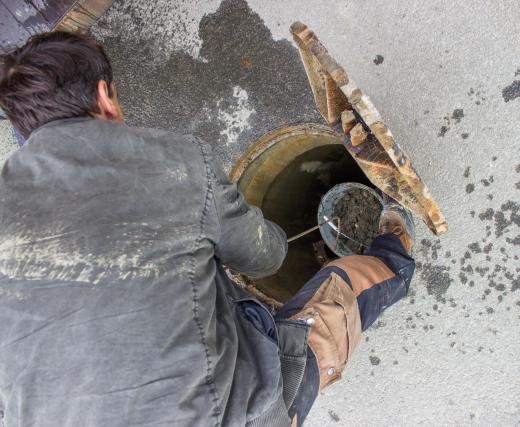A hydrant wrench is a specialty tool used to access the water valves inside of fire hydrants, or fireplugs. These tools are much larger than standard wrenches, and made from heavy-duty materials to meet the challenges presented by fire hydrants. Many firefighters carry several hydrant wrench models to meet the needs of different applications, or to remove valve covers with a wide range of sizes. Some of these wrenches may also be adjustable to fit different plug sizes.
During a fire emergency, firefighters have to open the hydrant and connect hoses as quickly as possible to minimize damage and help save lives. The hydrants can make this process difficult. These hydrants are often made from metal, which can rust or corrode after years of weather exposure, causing valves and covers to become stuck. At the same time, hydrant designers must include special covers to protect the hydrant from tampering. A hydrant wrench is designed to address all of these potential problems, and to quickly loosen even the oldest or toughest fasteners.

In the United States (US), fire hydrants often feature a large bolt shaped like a pentagon. This specialty bolt is difficult or impossible to remove using traditional tools. A hydrant wrench in the US often incorporates a nut designed to fit around this five-sided bolt. It may include a metal rod that can be adjusted to increase or decrease the size of the nut to fit different bolts of this design. Firefighters who rely on non-adjustable wrenches simply carry a selection of sizes to fit the needs of different applications.

Other countries, and some parts of the US, may rely on a different type of connector to join valve covers to a fire hydrant. These covers require a special spanner wrench with a hooked, or curved, profile. Sometimes known as a Storz tool or tricoise wrench, this type of hydrant wrench is designed to wrap around the curved perimeter of the valve cover. A hook at one end of the wrench fits into a groove on the cover, and helps firefighters twist off the cover to access the valves below. These curved wrenches can also be used to loosen stuck caps that were removed used a pentagonal hydrant wrench, or even to tighten hose couplings once the hydrant had been opened.
A hydrant wrench may also be used by maintenance personnel or crews outside of the firefighting industry. For example, gas or sewer workers may utilize these wrenches to adjust the large bolts typically found in these types of applications. A hydrant wrench is also needed to turn on a water main service, or to operate the water meter shut off.
